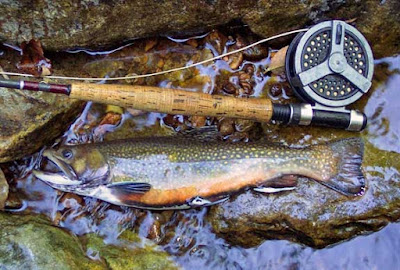There are so many different lures designed to catch trout. Which one you use is really up to the trout fishermen; what each individual is comfortable with and what the trout happen to be going after that day. One type of lure is a spinner.
Spinners are used when one is spinner fishing unlike flies that are used when fly fishing. Spinners and lures are created to imitate the prey that trout usually go after. Although, lures and spinners rarely look like the prey they are patterned after. Choosing the right kind of lure to use in the right season can be challenging. In the spring time, trout fish are typically hugging the bottom of the water and are a bit sluggish after their winter hibernation. You will need to use a lure that is not too light to be passing over the fish’s heads an done that is not heavy enough to get caught on some under water plant or rock. The best bet in the situation is to bring several different lures with you on your fishing excursion and try them out to see what works best. A spinner and worm rigs can be used in the spring when the creeks are full of the spring runoff. Use an un-weighted spinner with a worm on it. Allow it to drift along the bottom of the water allowing just enough split shot added to keep it there for a while.
Spoons are a type of spinner that resembles what the name implies. They are shaped like the end of a spoon and it wobbles when it is retrieved. It imitates a small bait fish. Whether or not the spoon will really be successful for you really depends on what the trout are feeding on in an area. If there are no bait fish in the area that the trout normally feed on, then the trout might not hit is. Spoons come in all different types of weights, shapes, and sizes. Early in the spring it is best to use a spoon that is heavy and compact and no longer the one inch.
Check: 5 best lure for bass fishing in 2017
Rooster tails are another popular lure when it comes to trout fishing. These lures have a small tuft of some kind of animal hair on the end. Rooster tails are supposed to imitate a minnow which is a natural prey for trout. They and can either dive deeper into the water or stay close to the surface. In order to get the lure to dive to different water depths, you have to tweak the lip on the lure. This can be somewhat difficult because you want to avoid breaking your lure. Most of the rooster tails are about 3 to 4 inches in length.
Typically the trout fishermen casts upstream when spin fishing. They will also cast up and across depending on the speed of the current within the body of water. The most important rule to follow is: “if it’s not broke, don’t fix it. And if it is broke, keep trying something until it works.”

